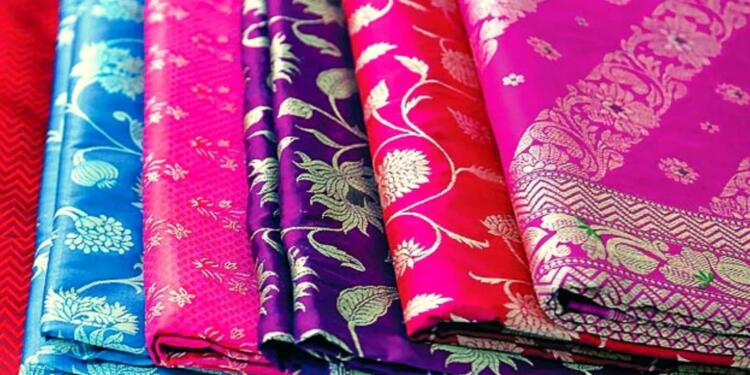Mughals made us humans. They taught us how to breathe. They taught us how to eat, drink and even sleep. We exist because of the Mughals. This is what we have been fed throughout our lives. One such attempt to glorify Mughals is that they were the ones who introduced Banarasi Sarees to India. But, was it the truth?
For some, Mughals introduced Banarasi Sarees to India
As you try to find out the origin of Banarasi Sarees, you’ll find out various websites claiming that Mughals should be thanked for this contribution. While one website wrote, “The Mughal empire first introduced Banarasi silk to India”, another wrote that “An eternal appeal of Mughal designs lies in this deep purple Banarasi silk saree.”
For them, it is the impact of the Mughal empire that can be strongly seen in the sarees that we drape today. Enough of this fake glorification of Mughals. Today, we unleash the truth behind Banarasi Sarees and their real origins.
History of Banarasi Sarees
Mark Twain once rightfully said, “Benares is older than history, older than tradition, older even than legend, and looks twice as old as all of them put together”. You see, Banaras has been an epicentre of the arts, learning, philosophy, music and religion.
Kashi has always been a famous weaving and trade centre in ancient times. One of the creations called Hiranya, a distinguished cloth of gold worn by Gods, has its origin in the Rig Veda. The Hiranya is equivalent to the present-day zari work or the kimkhab/kinkhab brocades of Banaras. In the Mahabharata and Ramayana, the fabric woven in Banaras has been mentioned as Hiranya Vastra or Putambar Vastra.
It is pertinent to note that Banaras and its surrounding areas had great cotton-growing regions thus it was a reputed textile manufacturing centre.
The textile of Kashi continued to flourish
You see, Kashi continued to flourish as a regional capital under the Nandas, the Mauryas and the Sungas and so did the textile of Kashi. The quality kept becoming better and more expensive.
Read more: Thank you Mughals, for teaching us how to breathe, drink and making us humans
The Banarasi is fabricated solely for royalty and is instilled with a rich history. It is popular for its unique weaving style and should be attributed to the weavers of Banaras. Historians have documented the strong influence of Hindu motifs and Rajasthani paintings on early brocades. However, around the 16th century, such designs came to an end.
History also suggests the arrival of weavers from Gujarat in the region between the 14th and 16th centuries after which Banaras’ weaving industry started using silk for brocades.
Foreign began dominating the brocades
However, the brocades we see are not the original ones. Persian, Mughal, and Central Asian influences dominated the brocades. Today’s Banarasi weave has been impacted by numerous foreign influences.
It is true that it was only during the Mughal period in the 14th century that weavers made their mark in the industry. They created unique and intricate silk brocades using silver and gold zari threads. They also started receiving more appreciation during the 18th and 19th centuries for such exceptional work.
Mughals did not introduce Banarasi Saree. According to Ralph Fitch, during the Mughal rule, Banaras manufactured turbans in great numbers for them.
During the British period, the use of handlooms was halted. As a result, Banaras’ weaving population had reduced. It was only after India achieved Independence that the weaving skills were revived once again.
Today, people seek the expertise of master weavers to produce shimmering Banarasi silks in traditional and unconventional patterns. Even today, the weaving industry in Banaras continues to remain an epicentre of weaving traditions in India.
Support TFI:
Support us to strengthen the ‘Right’ ideology of cultural nationalism by purchasing the best quality garments from TFI-STORE.COM.
